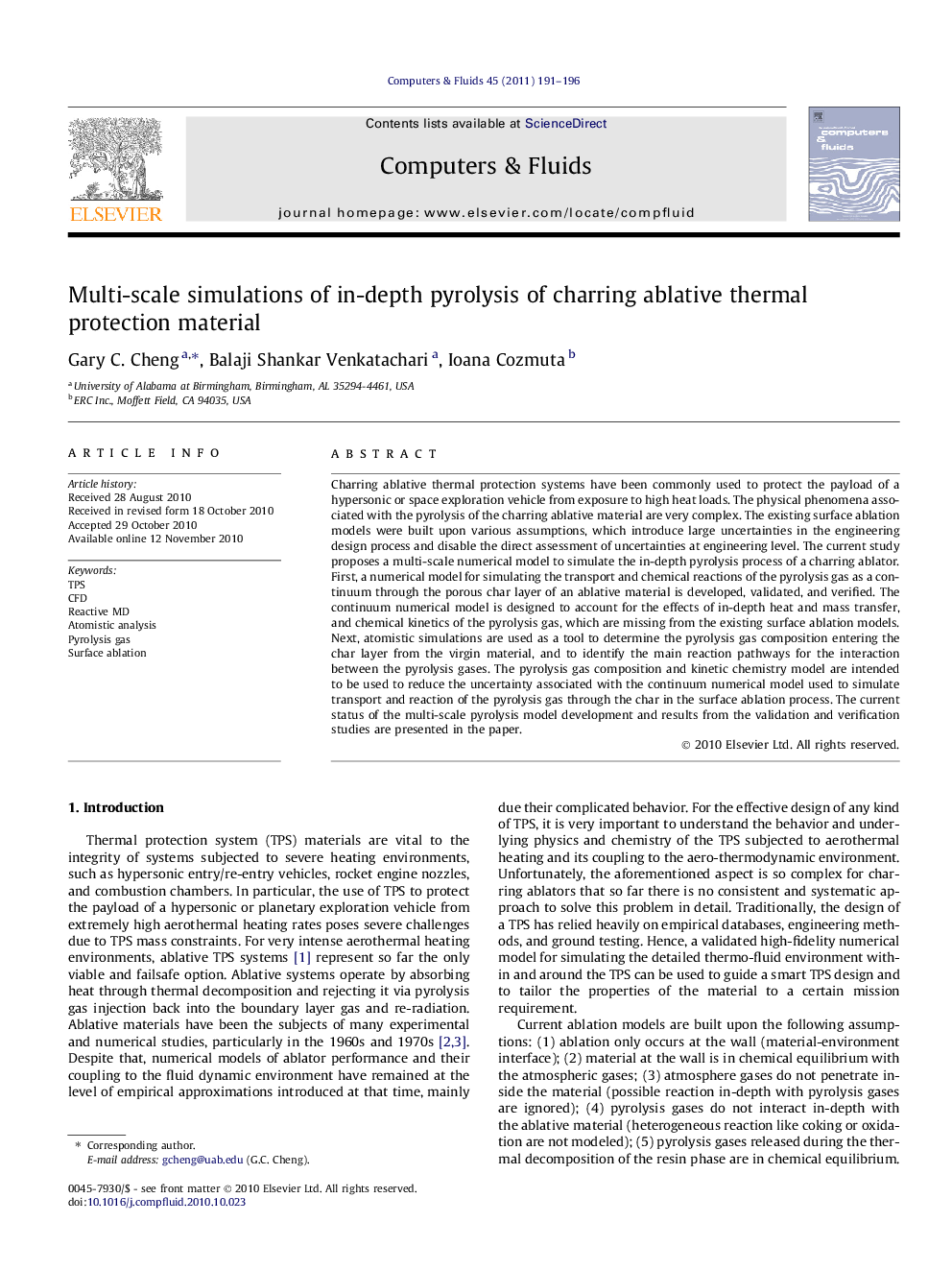| Article ID | Journal | Published Year | Pages | File Type |
|---|---|---|---|---|
| 768821 | Computers & Fluids | 2011 | 6 Pages |
Charring ablative thermal protection systems have been commonly used to protect the payload of a hypersonic or space exploration vehicle from exposure to high heat loads. The physical phenomena associated with the pyrolysis of the charring ablative material are very complex. The existing surface ablation models were built upon various assumptions, which introduce large uncertainties in the engineering design process and disable the direct assessment of uncertainties at engineering level. The current study proposes a multi-scale numerical model to simulate the in-depth pyrolysis process of a charring ablator. First, a numerical model for simulating the transport and chemical reactions of the pyrolysis gas as a continuum through the porous char layer of an ablative material is developed, validated, and verified. The continuum numerical model is designed to account for the effects of in-depth heat and mass transfer, and chemical kinetics of the pyrolysis gas, which are missing from the existing surface ablation models. Next, atomistic simulations are used as a tool to determine the pyrolysis gas composition entering the char layer from the virgin material, and to identify the main reaction pathways for the interaction between the pyrolysis gases. The pyrolysis gas composition and kinetic chemistry model are intended to be used to reduce the uncertainty associated with the continuum numerical model used to simulate transport and reaction of the pyrolysis gas through the char in the surface ablation process. The current status of the multi-scale pyrolysis model development and results from the validation and verification studies are presented in the paper.
